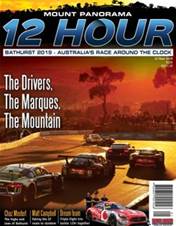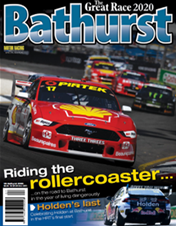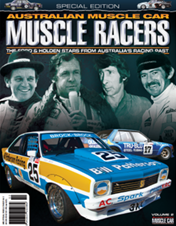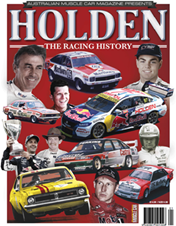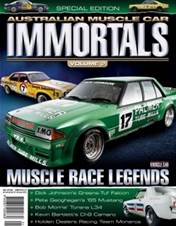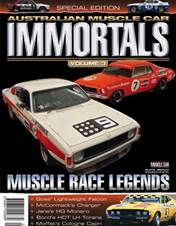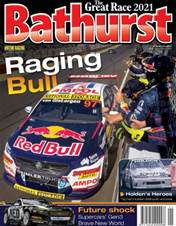Melbourne-based Darren Forrest and Mount Gambier’s Paul Razum (‘Razz’ to his friends) made it to Bathurst in 2021 after the original plan to run it in 2020 was thwarted due to the pandemic forcing the race’s cancellation.
Their car was hard to miss. It’s painted in the colours and markings of a World War II Royal Australian Air Force P-40 Kittyhawk fighter operated by 76 Squadron in New Guinea and the islands
to north.
The reason? Darren Forrest’s grandfather.
Darren describes himself as ‘a dreamer who always wanted to race at Bathurst in a Holden V8’ to pay homage to his late grandfather, Cliff Elms, who served with 76 Squadron as ground crew during the war.

RAAF squadrons had their own two-letter code at the time, followed by a single letter to identify the individual aircraft. 76 Squadron’s code was SV and Darren has used P as the suffix, for ‘Pop’, his pet name for Cliff, thus SV-P on the car along with the Pacific campaign RAAF roundel with the red dot in the middle deleted.
This was done so that friendly gunners wouldn’t see a red circle, think the aircraft was Japanese and try to shoot it down! And yes, it happened. The tails of most RAAF fighters in the Pacific were also painted white to further help identification, and this is reflected in the white on the rear of the car.
Darren and Razz co-own and co-drive the VF ClubSport R8 Black Edition (number 114 of 350), and Razz built the car in his Mount Gambier workshop.
Family influences
Darren’s Pop was a humble man who didn’t ask for anything from anybody, remembers Darren.
“He suffered many demons from his war service, which he carried with him until only days before he died when he revealed some of them to me.
“He broke down and told me a story about how a US troop plane crashed on arrival on one of the islands he served on. Being ground crew, his and his mates’ job was to collect the bodies, over 50 of them! It’s the only time I ever saw Pop shed a tear and it still upsets me thinking of how he kept it bottled up for so many years. He never spoke of it, ever.
“He became deaf from sitting on the wing guiding pilots where to steer while they were taxiing [the long nose and angle of the tailwheel aircraft meant they couldn’t see directly ahead] due to the straight out exhaust – and he broke his ankles once when they hit a pothole and one wing went up a one went down, putting him into orbit.
“By doing this I have the opportunity to tell the world about Pop and what he did, how he did it, and how lucky we all are that people like him made so many sacrifices. They say the pilots were the heroes, just like they say race drivers are heroes, but it is a team effort. Some heroes stay in the shadows.”
Cliff Elms was also a bit of a car nut. He owned the first Ford V8 in Mooroolbark, Victoria (a 1932 model with 16-inch Polyglass tyres) and he also owned Chevs, V8 Ford Fairlanes and Holden Statesmans.

Although the ClubSport’s livery pays direct tribute to Pop – and the name Elms appears above Darren’s and Gazz’s on the rear quarter window drivers’ listing – it also serves to recognise other members of Darren’s family who have ‘done their bit’.
“My Nanna Fitzpatrick served in the Army, measuring steel in a factory in Broadmeadows to be used in the war effort. She’s nearly 96 and when I spoke to her a couple of years ago she was locked down in her nursing home and she rattled off her service number (518302) straight away,” says Darren. “She still knew the measurements of the steel as well.
“My other grandfather, Harry Forrest, passed away when I was young, but I do know he served in the Occupation of Japan as part of a regiment of soldiers doing cinema work. That’s how news was done in those days, through the cinema newsreels.
“My dad, Maurie Forrest, did seven years of National Service in the Army’s 23rd Battery Field regiment. He was set to go off to Vietnam, but mum got pregnant with me so he didn’t have to go. It was probably lucky for everyone, especially the enemy, that he didn’t go. People who know dad will know what I mean!”
The car runs four VB stickers on its headlight covers, one for each of the family members mentioned above and ‘because my dad loves a frothy or two’, says Darren.

76 Squadron RAAF
One of the leading RAAF fighter units of World War II, 76 Squadron was formed at Archerfield, Queensland, in March of 1942, equipped with P-40 Kittyhawks. It was soon in action when it moved to Milne Bay, New Guinea in July that year, and was a key element in the decisive and all-Australian victory against the Japanese there the following month.
The squadron returned to Australia in February 1943 but in August went back to New Guinea before moving to the islands north as the Japanese were pushed back. Its last combat posting was to Labuan to support the invasion of Borneo in June 1945.
Now equipped with Mustangs, 76 Squadron went to Japan in February 1946 as part of the British Commonwealth Occupation Force. In more modern times, 76 Squadron has operated Vampire, Sabre and Mirage fighter jets and now flies the Hawk lead-in fighter trainer out of Williamtown NSW.

From dirt to bitumen
Darren and Razz were not new to motorsport when they went to Bathurst. Both had extensive speedway experience running sedans – including in the USA – before they decided to tackle bitumen circuit racing. Darren was first exposed to speedway when he was 12 years old, accompanying his parents to meetings where they both raced a Valiant Charger. His dad also did some track commentary. It was in speedway where the first 76 Squadron markings appeared on Darren’s car.
“Many speedway followers will remember this scheme getting a run on my speedway car, the last time Anzac Day fell on a Saturday in 2009,” says Darren. “This was at Hamilton, Victoria, and the local RSL boss was pretty happy with it.”
From there the idea of helping with the Anzac Day appeal developed, raising awareness for war widows and others connected with military service or their families. The team has permission to use the Anzac Appeal logo on the Bathurst Holden and of significance is the fact that the car’s sponsors – Penrite, ENZED and Boronia Tow Bars – have all agreed to not have their logos on the car in order to keep the livery as clean as possible.
This must be a first in motorsport – sponsors not wanting their logos on a race car! “They spent more to get less signage,” notes Darren, which is quite remarkable.

Darren and Razz have a long association in motorsport. Razz is regarded as one of the best engine builders in the business and responsible for putting together Darren’s speedway motors. He’s also a decent steerer.
Their first experience of circuit racing was at Winton where they ran their speedway sedans, Darren scoring pole and Razz winning. This whet their appetites for more, and the decision was made to build a car to take on the bitumen racers, Razz putting together a 2004 VZ Commodore for the 2019 Production Car championship. Contesting the B2 Performance, Naturally Aspirated class, they had a pretty good season, able to consistently run in the top 10 outright at different tracks around the country.
“The car was a weapon,” says Darren, “and a credit to Razz for being able to engineer a car so cheaply that was so quick. Trouble is, it was too quick for the brakes we had to use which worked for a while and then didn’t, which means you end up in the sand trap for the rest of the race. Not the car’s fault, the driver shouldn’t push so hard, but we were leading the last race of the year outright when I went off…
“In only four races we came together as a team, improving in every area each time we went out and still keeping it fun. We even won our class in the championship – but I need to point out that we were the only one in it!”
After their 2019 adventure the boys looked at moving up to a higher class and perhaps running an R8 ClubSport or a GTS in 2020. They started looking around for something suitable but in the meantime stripped down the VZ with the intention of preparing it for the Bathurst Six Hour the following April.

The car
Darren and Razz found their new wheels later in 2019, a genuine matching numbers HSV VF ClubSport R8 Series 2 Black Edition, one of the last of that very special breed before the Holden brand was ‘retired’ by General Motors.
The car they bought had been a statutory write-off after someone bent it. ‘Statutory Write-Off means it was deemed to be unsafe and unable to be repaired and couldn’t be re-registered. It could only be used for spare parts – or turned into a race car.
The car had suffered a heavy hit on the right front wheel area which had caused serious damage to that part of the car as well as the chassis rail and floorpan, thus the write-off. Amazingly, there was damage to only one panel – the front guard – and a colour-matched replacement was quickly found.
Darren believes the car may be the only genuine ClubSport running in production car racing. This is highly probable, as most are modified ‘standard’ Commodores rebuilt with reproduction body kits and the appropriate mechanicals installed. It’s the logical way to go production car racing with one of these cars – there’s considerable savings to be made in not going out and purchasing an original HSV model and, in doing so, a genuine original HSV is preserved as a road car. The car was purchased at auction through the Pickles organisation.
With 340kW on tap from its 6.2-litre LS3 Generation IV V8, the R8 Black Edition was a quick car in standard trim, capable of 0-100 acceleration in a shade under five seconds. It was available with either manual or automatic six-speed transmissions and sat on 20x8.5in (front) and 20x9.5in (rear) wheels shod with 255/35 and 275/35 tyres.

Building a race car
Darren and Razz took delivery of the car near the end of 2019 and work began on rebuilding and turning it into a racer. As noted earlier, the intention was to have it ready for the 2020 Bathurst Six Hour the following April, but the race was cancelled due to the Covid situation.
Other events planned for the car in 2020 were also cancelled, so Darren and Razz would have to wait until the 2021 Bathurst Six Hour before the HSV would contest its first race.
The cancellation of the 2020 race meant that some of the urgency to complete the car was removed. But the job was done by June and a very brief test was done at South Australia’s new Tailem Bend circuit.
The car was built by Paul Razum at his RazzTech facility at Mount Gambier, apart from the roll cage installation which was done in Melbourne. Mount Gambier’s MMCR panel shop took care of tidying up the bodywork.
The car also has small ‘sharkmouth’ markings on its front panels. These were applied to many World War II fighters, including Kittyhawks, but in this case they represent something different – dinosaurs: “to please my grandson,” says Darren.
The Covid lockdowns meant Darren wasn’t able to go to Razz’s workshop during the car’s built – although that was probably just as well, Darren says.
“He wouldn’t have let me anywhere near the car when it was being built,” he says with a laugh. “And quite rightly too, because I’m no mechanic by any stretch of the imagination. I just drive the thing. He wouldn’t let me anywhere near our speedway cars or the other Commodore, either,” he added.

The logistics involved were a bit complicated with Darren in Melbourne and Razz and the car in South Australia. This was exacerbated by the Covid situation when borders were shut and travel between the two states was often impossible.
“Covid and the restrictions made things difficult,” notes Razz. “Businesses from which we needed parts were often closed along with the borders, meaning there were delays in getting them. We couldn’t have any face-to-face contact, but we made it.”
The ClubSport was built to comply with Australian Production Car Class A2 regulations for high performance, naturally aspirated cars. Darren and Razz looked at building it to Class X rules, which allow forced induction, but they decided to stay with A2 because it would require one less fuel stop over six hours at Bathurst, and the car could also at a lighter weight.
Some modifications allowed under the regulations include the free use of brake callipers and pads (although the rotors had to remain as before), while suspension is basically free as long as the original pickup points are used. There is no in-car suspension or brake bias control, everything has to be adjusted externally.
A Motec ECU and dash is fitted, as per regulations. The Tremec TR6060 six-speed gearbox has a single-plate NPC clutch, and there is additional cooling for the Kaaz limited slip differential. The team runs a 3.7:1 diff supplied by 360 Diffs at Bayswater in Melbourne.
Fuel capacity is 100 litres and other items fitted included a cool box, radio and, of course, all the usual safety gear.
A tyre diameter anomaly caused a few headaches. The standard car came with 20-inch diameter wheels but the regulations require the fitting of 18-inch rims and Indian-made MRF control tyres, which were only made available in the smaller size. This had an impact on the brake rotor diameter.

And so to Bathurst
The Forrest/RazzTech Motorsports HSV ClubSport R8 car number 29 rolled onto the Mount Panorama circuit for the first time on 2 April 2021 for its first practice session with Darren at the wheel ahead of the race two days later.
“Wow, what a cool track!” he remembers. “I got to do around 50 minutes non-stop with no major issues. We played around with front end settings, changing the negative camber from four degrees – which killed the tyres – to 2.7 degrees. I recorded a best of 2m40.3s and sat about 31st out of 64. The car was way quicker than the driver, but importantly we were in front of the Falcons!”
Razz then hit the track and did 2m40.06s in the last session, with which put the car up to 29th, with only a vibration in one of the tyres causing any concern. During the day some ex-servicemen who were in the crowd got their photos taken with the car and team. “A very cool moment which made it all seem worthwhile,” says Darren.
The third and final practice session the next day saw Razz turn into ‘Paul van Razzbergen’ according to Darren with a 2m35s lap which moved them up into 24th position. Darren had some issues with tyre walls bulging and said he was going to lodge an official protest against Razz as he must be cheating!

Razz finally qualified the car 28th: a good result, especially considering it was both drivers’ first time at Bathurst and between them they’d only had half an hour in the car before then.
After a strong performance for most of the race, the team unfortunately ended up recording a DNF, retiring after completing just over five of the six hours and 90 laps. The winning BMW M4 (with the real Shane van Gisbergen on board!) logged 120 laps.
Darren and Razz got the ClubSport up to 20th before an airlock in the fuel filler lost them about five laps. Then a belt tensioner failed and the timing chain broke while going up Mountain Straight. This finally put them out.
“Game over,” says Darren, “but we were all smiling. The car didn’t have a scratch on it, and it was the best thing I’ve ever steered in years of racing cars.
“Simple things just happen, through no fault of anyone. Our crew was our ace card, a bunch of misfit volunteers who smashed it out of the park at their first attempt at Bathurst with mostly faultless pit stops and a fun vibe around the pits.”
And most importantly, Pop and the other family members got the recognition Darren so badly wanted to give them. Darren, Razz and the HSV will be back at the Six Hour in April this year. With some suspension tweaking, Razz reckons they can find another three or four seconds a lap at Bathurst.
As the major point of this exercise by Darren Forrest and Paul Razum is to encourage awareness and mateship, they hope that people watching the race on television (or veterans themselves) might think about someone they know who served our country and give them a call to say “g’day” or have a cuppa with them. A noble cause.

By doing this I have the opportunity to tell the world about Pop and what he did, how he did it, and how lucky we all are that people like him made so many sacrifices. They say the pilots were the heroes, just like they say race drivers are heroes, but it is a team effort. Some heroes stay in the shadows.

Photographer: Jack Arthur is a professional photographer with a passion for Aviation, Luxury Goods and Extreme Sports. With a keen eye for detail and a creative approach to composition, Jack's work showcases the beauty and diversity of the world around us through his company Snow Gum Marketing. Visit https://www.snowgummarketing.com.au


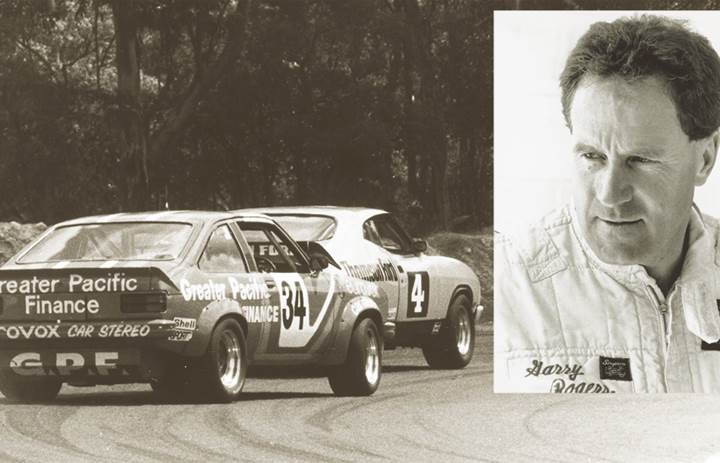


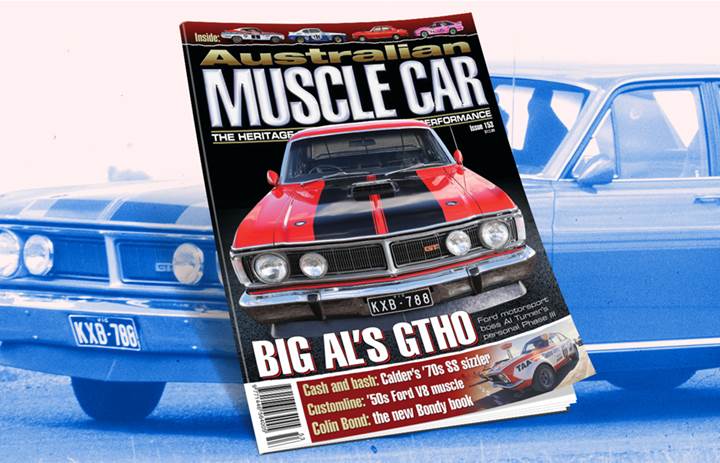
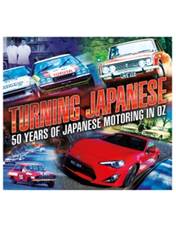
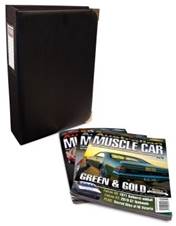


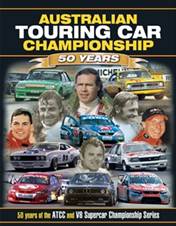

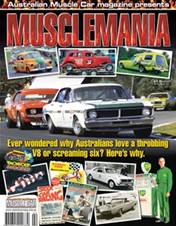
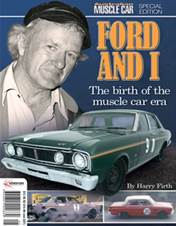
.jpg&q=70&h=226&w=176&c=1&s=1)
